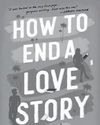試す 金 - 無料
Building the Essential Linkages
Writer’s Digest
|July - August 2023
Ten ways to craft the connective tissue your story needs.

If the human body were composed only of organs, bones, and muscles, we'd merely be a bloody pile. We need connective tissue, so we don't fall apart.
Same with any structure, if you think about it. Put up a brick wall without mortar and see how that works out. Lumber won't stick to itself. Nails, rivets, bolts the right connectors at the places make the whole thing sound.
Fiction is a structured art form; therefore, it too needs bonding elements. For the sake of simplicity, let's call it connective tissue: the small, subtle things, the adroit stuff top authors do to make their stories feel seamless. Where are the characters? What are they thinking? What are they doing?
Here is a passage that could use some help:
They argued with no resolution. At work, Omar heard a sudden sound.
Here's a simple transition, embedded directly in the third-person narrative:
After the argument with Frances, Omar went home and ordered a pizza, though he didn't enjoy it much. The next day at work, he was running the macros on the new database when a sharp crack interrupted his concentration. A gunshot?
With this adjustment, we follow Omar from one piece of action to another, from one place to another in time and space, even from one mood to the next.
When a work of fiction feels choppy, it's often because the author has skipped from one place or character to another without enough help for the reader. And when a story feels labored or sludgy, it's because the author has put in too much connective tissue: It's overtold. This is one of those elements of fiction that are subtle and unquantifiable, and best understood by examples.
Let's start with the simplest sorts of connective tissue and move through to more intricate ones. (Spoilers from real novels and stories ahead.)
1. Dateline
このストーリーは、Writer’s Digest の July - August 2023 版からのものです。
Magzter GOLD を購読すると、厳選された何千ものプレミアム記事や、10,000 以上の雑誌や新聞にアクセスできます。
すでに購読者ですか? サインイン
Writer’s Digest からのその他のストーリー
Writer’s Digest
100 Best Markets for Writers
A list of print and online publications looking for freelancers to contribute their knowledge on everything from pet care to finance and beyond.
65 mins
Yearbook 2026

Writer’s Digest
Memoir Plus
Add a bonus to your personal narrative for a marketing boost.
8 mins
Yearbook 2026
Writer’s Digest
Surefire Ways to Sell Your Children's Book
In my 28 years editing children's books, I've learned that publishing exists at the intersection of art and commerce.
5 mins
Yearbook 2026
Writer’s Digest
The ABCs of Freelance Success
Many freelance writers, especially those at the beginning of their careers, tend to place almost all of their professional focus on one specific component: craft.
5 mins
Yearbook 2026

Writer’s Digest
How to Write in Different Genres
Emiko Jean and Yulin Kuang share tips and strategies for how they successfully write in different genres and mediums.
8 mins
Yearbook 2026
Writer’s Digest
Small But Mighty
Why small presses might be the perfect home for your book.
8 mins
Yearbook 2026

Writer’s Digest
The Story Behind the Story
What's backstory, and what's it doing here anyway?
6 mins
Yearbook 2026

Writer’s Digest
2025 Year in Review
Publishing expert Jane Friedman recaps the biggest news in the industry.
8 mins
Yearbook 2026

Writer’s Digest
What Is Your Story Question?
When a story isn't working—when you know it's not quite coming together, when beta readers and critique partners confirm your fears but can't put a finger on why, or you're not getting offers from agents or publishers—savvy authors start trying to diagnose the issue by examining its component parts, like characterization, plot, and stakes.
6 mins
Yearbook 2026
Writer’s Digest
Writer's Digest 27th Annual 101 Best Websites for Writers
For the 27th year, Writer's Digest is shining a light on 101 websites with a goal of helping writers in a variety of ways.
26 mins
Yearbook 2026
Translate
Change font size
